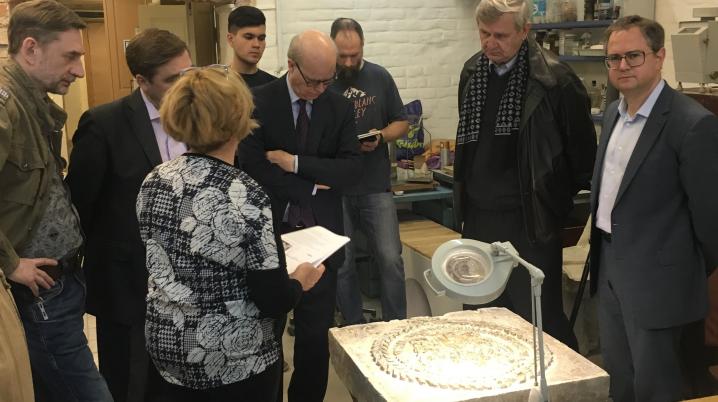
Russia: artefact that witnessed shared history of Russia and the Netherlands under restoration
A unique relic of the past shared between Russia and the Netherlands, dedicated to Nicolaes Witsen, is being restored in Moscow. The memorial plaque was installed in 1694 by the Dutch community in Moscow as a sign of their gratitude for Witsen’s generous financial contribution to the building of a Dutch reformed church in Moscow.
Nicolaes Witsen
Nicolaes Witsen (1641-1717) was a Dutch statesman, mayor of Amsterdam, administrator of the Dutch East India Company (VOC), traveller, cartographer, and an expert in all things Russian. In 1664-65 Witsen visited Muscovy as a member of a diplomatic mission. His fascinating travel notes were published only 3 centuries later. In 1694, he contributed to the construction of the Dutch church in Moscow's foreign quarter. In the church, the grateful Dutch community installed a stone memorial plaque, the very first one in Russia.
Protecting shared heritage today
The original building did not survive the Napoleonic invasion of 1812. However, the memorial plaque to Witsen was saved and transferred to a church in the very heart of Moscow, that was used by the Dutch community up to the Russian revolution in 1917. During the Soviet period it was considered lost for good. But in 2013 the stone plaque was rediscovered and officially presented in a festive ceremony attended by the Dutch Ambassador. In 2016, it was transferred to GosNIIR, the Russian national restoration institute. On 24 April 2019 a group of Witsen's successors from the Dutch embassy visited the Institute to see how the work was developing. The conservators had removed several layers of oil paint. The specialists hope to soon be able to present the plaque as it once looked.

